Marrying Vega and Zen: The AMD Ryzen 5 2400G Review
by Ian Cutress on February 12, 2018 9:00 AM ESTBenchmarking Performance: CPU Legacy Tests
Our legacy tests represent benchmarks that were once at the height of their time. Some of these are industry standard synthetics, and we have data going back over 10 years. All of the data here has been rerun on Windows 10, and we plan to go back several generations of components to see how performance has evolved.
All of our benchmark results can also be found in our benchmark engine, Bench.
3D Particle Movement v1
3DPM is a self-penned benchmark, taking basic 3D movement algorithms used in Brownian Motion simulations and testing them for speed. High floating point performance, MHz and IPC wins in the single thread version, whereas the multithread version has to handle the threads and loves more cores. This is the original version, written in the style of a typical non-computer science student coding up an algorithm for their theoretical problem, and comes without any non-obvious optimizations not already performed by the compiler, such as false sharing.
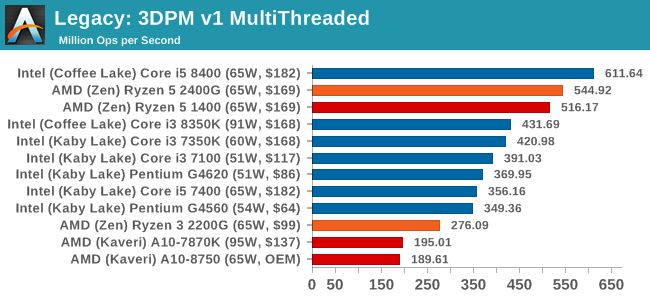
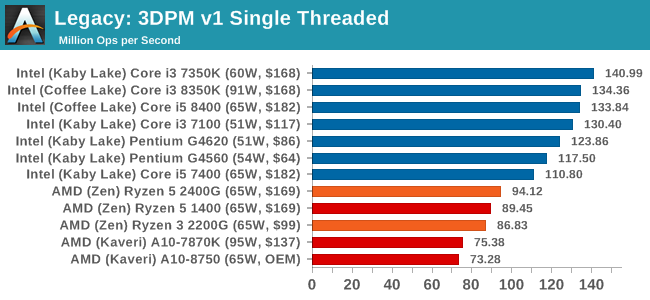
CineBench 11.5 and 10
Cinebench is a widely known benchmarking tool for measuring performance relative to MAXON's animation software Cinema 4D. Cinebench has been optimized over a decade and focuses on purely CPU horsepower, meaning if there is a discrepancy in pure throughput characteristics, Cinebench is likely to show that discrepancy. Arguably other software doesn't make use of all the tools available, so the real world relevance might purely be academic, but given our large database of data for Cinebench it seems difficult to ignore a small five minute test. We run the modern version 15 in this test, as well as the older 11.5 and 10 due to our back data.

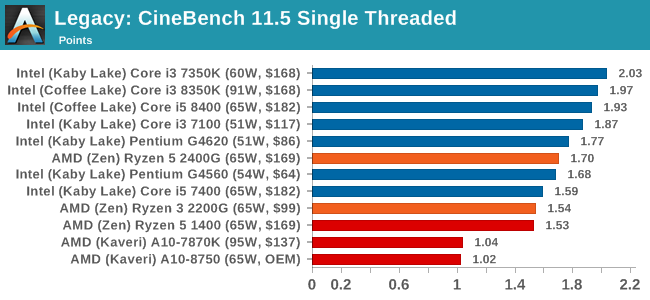
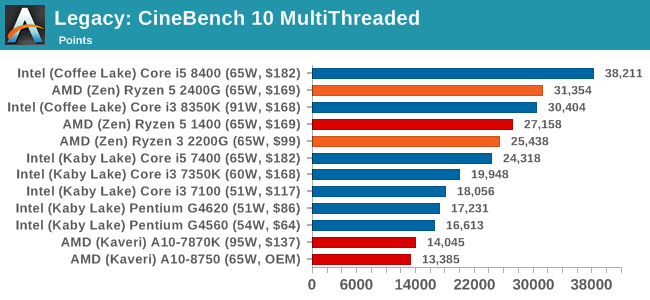
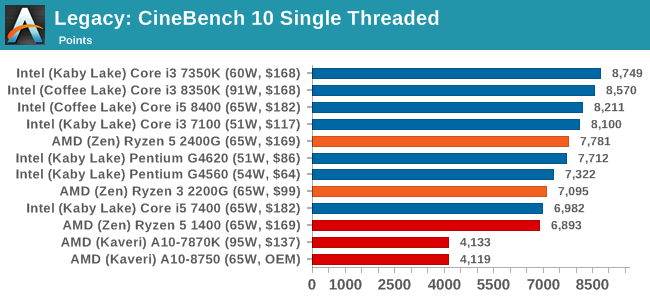
x264 HD 3.0
Similarly, the x264 HD 3.0 package we use here is also kept for historic regressional data. The latest version is 5.0.1, and encodes a 1080p video clip into a high quality x264 file. Version 3.0 only performs the same test on a 720p file, and in most circumstances the software performance hits its limit on high end processors, but still works well for mainstream and low-end. Also, this version only takes a few minutes, whereas the latest can take over 90 minutes to run.
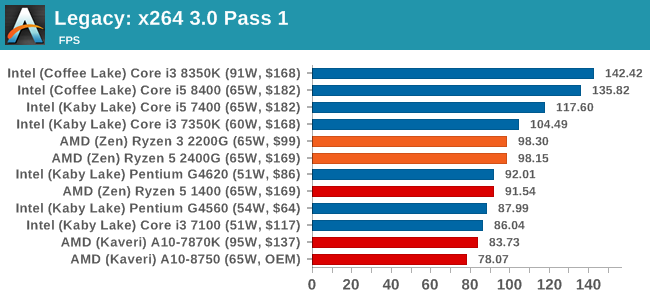
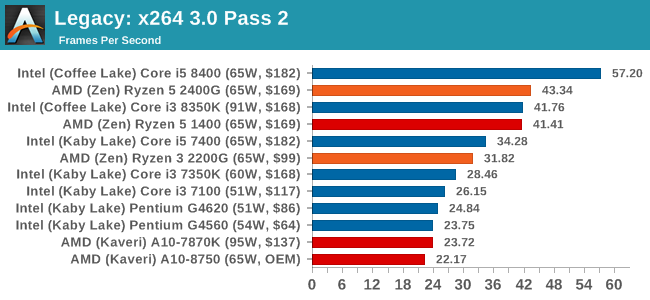










177 Comments
View All Comments
Fritzkier - Tuesday, February 13, 2018 - link
Well not really. While they using Pentium G with GT 730 or lower, many uses AMD A-series APU too (since they no need to use low end discrete GPU to be on par)And Ryzen 2200G also priced the same as Pentium G with GT 730 tho. The exception is RAM prices...
watzupken - Tuesday, February 13, 2018 - link
If AMD uses a beefier Vega IGPU, are you willing to pay for it is the question? I feel iGPU will only make sense if the price is low, or if the power consumption is low. Where Intel is using AMD graphics, is likely for a fruity client. Outside of that, you won't see many manufacturers using it because of the cost. For the same amount of money Intel is asking for the chip only, there are many possible configuration with dedicated graphics that you can think of. Also, the supposedly beefier AMD graphics is about as fast as a GTX 1050 class. You are better off buying a GTX 1050Ti.iwod - Tuesday, February 13, 2018 - link
Well unless we could solve the GPU Crypto problem in the near future ( Which we wont ) I think having better Vega GFx combined with CPU is good deal.Gadgety - Monday, February 12, 2018 - link
Will these APUs do HDR UHD 4k Bluray playback (yes I know it's a tiny niche), or is that still Intel only?GreenReaper - Wednesday, February 14, 2018 - link
Probably best to just get an Xbox One S for it. As a bonus you could play a few games on it, too!watzupken - Tuesday, February 13, 2018 - link
I feel the R3 2200G is still a better deal than the R5 2400G. The price gap is too big relative to the difference in performance. And because these chips are over clocking friendly, so despite the R3 being a cut down chip, there could be some performance catchup with some overclocking. Overall, I feel both are great chips especially for some light/ casual gaming. If gaming is the main stay, then there is no substitute for a dedicated graphic solution.serendip - Tuesday, February 13, 2018 - link
The 2200G is a sweet because it offers most of the 2400G's performance at a sub-$100 point. For most business and home desktops, it's more than enough for both CPU and GPU performance. And with discrete GPUs being so hard to get now, good-enough APU graphics will do for the majority of home users. Hopefully AMD can translate all this into actual shipping machines.I'm going to sound like a broken record but AMD could send another boot up Intel's behind by making an Atom competitor. A dual-core Zen with SMT and cut-down Vega graphics would still be enough to blow Atom out of the water.
msroadkill612 - Tuesday, February 13, 2018 - link
Its a pity they dont get hbcc.msroadkill612 - Tuesday, February 13, 2018 - link
Simply put, amd now own the entry level up to most 1080p gaming, and its a daunting jump in cost to improve by much.Its polite and nice of this review to pretend intel has competitive products, and include them for old times sake.
serendip - Tuesday, February 13, 2018 - link
Looks like AMD owns the good-enough category. As I said previously, let's hope this translates into actual machines being shipped, seeing as OEMs previously made some terrible AMD-based systems at the low end.